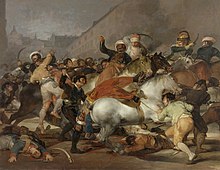The Oldest Confession
Bourne is introduced, stealing three masterpiece paintings from his supposed friend, the Duchess of Dos Cortes, and arranges for his wife to smuggle them to Paris for a highly profitable sale.
In 1955, Condon, then 40 years old and a longtime New York publicist and Hollywood employee of various studios, was the publicity agent for The Pride and the Passion, a film starring Frank Sinatra and Sophia Loren being shot in Spain.
As he writes in his memoir, And Then We Moved to Rossenarra, he was present at a scene being filmed in the ancient rectory of the Escorial, the massive palace and cathedral outside Madrid.
The idea of masterpieces of Spanish painting hanging in stone castles all over Spain, high and invisible in the darkness, stayed with me and gradually formed itself into a novel called The Oldest Confession....Back in New York, Condon began turning his initial concept into a screenplay—until his wife pointed out, that he was writing it in the past tense instead of the present, which is obligatory for screenplays, and that it should be turned into a novel.
'"[10] The movie version was released in 1962 as The Happy Thieves, starring Rex Harrison and Rita Hayworth, and was dismissed by The New York Times as a "limp herring" of "the devastating first novel".
[11] The duchess was ... a tribal yo-yo on a string eight hundred years long....[12]Bourne always sat uncommonly still ... a monument to his own nerves which bayed like bloodhounds at the moon of his ambition.[13]...
the duchess [inherited] the ownership of approximately eighteen per cent of the population of Spain inclusive with farms, mines, factories, breweries, houses, forests, rocks, vineyards and holdings in eleven countries of the world including shares in a major league baseball club in North America, an ice cream company in Mexico, quite a few diamonds in South Africa, a Chinese restaurant on Rue François 1er in Paris, a television tube factory in Manila, and in geisha houses in Nagasaki and Kobe.
Two men, seated sixty yards apart in separate sections of the plaza, had been pointed at as having thrown the knife but miraculously had been saved from the mob by courageous police.
It was, nevertheless, a fine inaugural reception in a most important media outlet for a hitherto unknown 43-year-old author: Unlike most other first novels, Richard Condon's is a fully controlled job of writing rather than an ardent grope.
The deterioration of James Bournes, Ivy League master criminal, is singularly unmoving even as one stunningly dramatic scene or ingenious plot-turn follows another....
